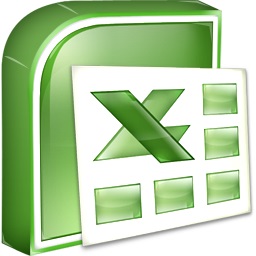Thursday, February 29, 2024
 5:03 AM
5:03 AM Ahmed Shafeeq
Ahmed Shafeeq On MS Word
On MS Word 5 comments
5 comments
Reflection on Mail Marge
Wednesday, February 28, 2024
 5:08 AM
5:08 AM Ahmed Shafeeq
Ahmed Shafeeq On MS Excel
On MS Excel No comments
No comments
Reflection on "IF" Conditioning
Sunday, February 25, 2024
 4:51 AM
4:51 AM Ahmed Shafeeq
Ahmed Shafeeq Ms Word
Ms Word 39 comments
39 comments
MAIL MERGE
FIRSTLY PREPARE A DATA SOURCE
Saturday, February 24, 2024
 5:09 AM
5:09 AM Ahmed Shafeeq
Ahmed Shafeeq Conclusion
Conclusion No comments
No comments
Thursday, February 22, 2024
 5:05 AM
5:05 AM Ahmed Shafeeq
Ahmed Shafeeq MS Powerpoint
MS Powerpoint No comments
No comments
Tuesday, February 20, 2024
Saturday, February 17, 2024
 6:40 AM
6:40 AM Ahmed Shafeeq
Ahmed Shafeeq Ms Word
Ms Word No comments
No comments
An eForm, short for electronic form, refers to a digital document designed for data entry and submission via electronic devices such as computers, tablets, or smartphones. These forms serve various purposes across industries, including business, government, education, healthcare, and more. They have become increasingly popular due to their efficiency, accessibility, and environmentally friendly nature.
eForms streamline processes by eliminating the need for paper-based documentation, reducing errors, and enabling faster data processing. They often include interactive elements such as dropdown menus, checkboxes, and text fields, allowing users to input information easily. Additionally, eForms can incorporate validation rules to ensure data accuracy and completeness before submission.
Organizations utilize eForms for diverse applications, including job applications, surveys, registration forms, order forms, feedback forms, and compliance documentation. They can be customized to match specific branding guidelines and integrated with backend systems for seamless data transfer and storage.
The adoption of eForms has led to significant cost savings by reducing paper consumption, printing, and manual data entry efforts. Moreover, they enhance user experience by offering accessibility features and the convenience of filling out forms remotely at any time. As technology continues to advance, eForms will likely become even more prevalent, revolutionizing traditional paper-based processes across various sectors.
Friday, February 16, 2024
 9:34 AM
9:34 AM Ahmed Shafeeq
Ahmed Shafeeq On MS Word
On MS Word No comments
No comments
Thursday, February 15, 2024
 5:55 AM
5:55 AM Ahmed Shafeeq
Ahmed Shafeeq Introduction
Introduction No comments
No comments
Tuesday, February 13, 2024
 10:37 AM
10:37 AM Ahmed Shafeeq
Ahmed Shafeeq On MS Power-point
On MS Power-point No comments
No comments
- https://www.youtube.com/watch?v=53QJAAqm-EA
- https://support.office.com/en-in/article/Create-a-hyperlink-459946fe-0747-4474-84e8-273d734466fe
 2:06 AM
2:06 AM Ahmed Shafeeq
Ahmed Shafeeq Ms Word
Ms Word No comments
No comments
APA (American Psychological Association) referencing in Microsoft Word involves utilizing the built-in referencing tools to cite sources within your document and generate a bibliography in the APA style. Here's a guide on how to do it:
Inserting Citations:
- Click on the "References" tab in Microsoft Word.
- Select "Insert Citation" and then choose "Add New Source" to input citation details manually or select "Insert Citation" to insert a citation from existing sources.
- Enter the required information such as author name, publication title, year, etc.
- Click "OK" to insert the citation into your document.
Choosing APA Style:
- After inserting all citations, ensure that APA style is selected for your document.
- Go to the "References" tab and click on the dropdown menu in the "Citations & Bibliography" group.
- Choose "APA" from the list of citation styles.
Creating Bibliography/References:
- Once you've inserted all citations, place your cursor at the end of your document where you want the bibliography to appear.
- Click on "Bibliography" in the "References" tab.
- Select "Insert Bibliography" to generate a list of all the sources you cited in APA style.
Example:
Suppose you're writing a research paper on the effects of social media on mental health. Here's how you would reference sources using APA style in Microsoft Word:
Insert a citation for a journal article:
- Click on "Insert Citation" > "Add New Source".
- Enter author name, article title, journal name, publication year, etc.
- Insert the citation where needed in your document.
Insert a citation for a book:
- Click on "Insert Citation" > "Add New Source".
- Enter author name, book title, publisher, publication year, etc.
- Insert the citation in the appropriate place in your document.
Once you've finished inserting all citations, go to the end of your document.
- Click on "Bibliography" > "Insert Bibliography".
- Word will generate a bibliography listing all the sources you cited in APA style.
Monday, February 12, 2024
 9:20 AM
9:20 AM Ahmed Shafeeq
Ahmed Shafeeq On MS Word
On MS Word No comments
No comments































